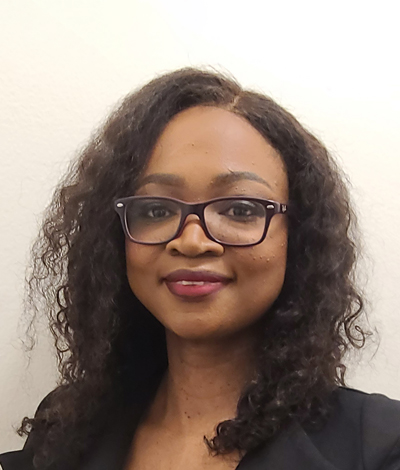SC-01: Reservoir Engineering Aspects of Carbon Capture and Storage
Location: Room 332 AD
Sunday, 2 March 2025, 8:30 a.m.–4:30 p.m. | Houston, Texas
Course Content
Copyright Inti Illimani Rodriguez Hernandez and Esuru Rita Okoroafor, Texas A&M University.
This one-day course provides an in-depth exploration of reservoir engineering aspects of carbon dioxide (CO₂) storage in porous media, focusing on fundamentals and using analytical and proxy models. Participants will learn key principles related to CO₂ capacity assessment, plume migration, injection pressure, and geomechanics. The course covers essential topics such as site selection criteria, Area of Review (AoR), CO₂ trapping mechanisms, and monitoring strategies to ensure secure storage. Through interactive class exercises, participants will apply analytical methods and proxy models to solve real-world challenges in CO₂ storage, making it an ideal course for professionals interested in advancing their fundamental understanding of CO₂ storage in porous media.
The course is intended for professionals interested in advancing their fundamental understanding of CO₂ storage in porous media.
Attendees are requested to bring their laptops for in-class activities.
Course Outline
| 8:30–9:00 am | Welcome and Course Introduction
Welcome remarks and introductions.
Overview of course objectives, schedule, and tools/models to be used for class projects. |
| 9:00–9:30 am | Introduction to Carbon Capture and Storage (CCS)
Overview of CCS and its role in decarbonization.
The CCS value chain (Capture, Transport, Storage).
Motivations and global impact of CO₂ storage. |
| 9:30–10:15 am | Reservoir Engineering for CO₂ Storage: Key Concepts
Rock and fluid properties relevant for CO₂ storage.
Laboratory characterization of reservoir rocks for CO₂ storage.
Multiphase flow of CO₂ and reservoir fluids. |
| 10:15–10:30 am | Break |
| 10:30–11:15 am | Analytical Models for CO₂ Storage Capacity and Plume Migration
CO₂ capacity assessment: Using volumetric and material balance methods.
Key drivers and parameters to maximize CO₂ storage capacity.
Analytical models for predicting CO₂ plume migration in porous media.
Class Project Part 1: Apply analytical methods to estimate CO₂ storage efficiency and capacity for a simplified reservoir model. |
| 11:15 am–12:00 pm | Injection Pressure Build-Up, Interference Testing, and Estimating Number of Injection Wells
Analytical models for predicting injection pressure as a function of time and reservoir properties.
Basics of Interference well testing for CO₂ injection wells.
Class Project Part 2: Calculation of pressure buildup during injection and estimating number of injection wells using simplified analytical equations. |
| 12:00–12:45 pm | Lunch |
| 12:45–1:30 pm | Minimizing CO₂ Storage Risks and Ensuring Secure Storage
CO₂ trapping mechanisms: Structural, stratigraphic, solubility, residual, and mineral trapping.
Overview of subsurface seals, migration pathways, and mitigation strategies.
Evaluating caprock integrity based on capillary entry pressures. |
| 1:30–2:15 pm | Geomechanical Considerations and CO₂ Mineralization
Assessing caprock integrity and stress changes due to CO₂ injection.
Analytical models for predicting stress changes and potential for fracturing.
Introduction to CO₂ mineralization and its role in long-term storage security. |
| 2:15–3:00 pm | Area of Review (AoR) and Site Selection Criteria
Defining and assessing the Area of Review (AoR) for CO₂ storage.
Criteria for site selection: Safety, storage potential, reservoir characteristics, and economic considerations.
Class Project 3: Using a proxy model to evaluate AoR and fracture potential during CO2 storage. |
| 3:00–3:15 pm | Break |
| 3:15–4:15 pm | Monitoring, The Role of Numerical Simulation, and Case Studies
CO₂ storage monitoring techniques: Seismic surveys, well logging, and pressure monitoring.
Difference between numerical simulations and analytical equations for CO2 storage modeling.
Final Class Project: A case study on a blue hydrogen project (hydrogen production with carbon sequestration). |
| 4:15–4:30 pm | Course Wrap-Up and Q&A
Summary of key takeaways.
Open Q&A session.
Course feedback. |
Instructor
 Rita Esuru Okoroafor
Rita Esuru Okoroafor Rita Esuru Okoroafor is an Assistant Professor at Texas A&M University. Her research focuses on using oil and gas skills and techniques to solve challenges related to low-carbon energy technologies. Before embarking on his Ph.D., Dr. Okoroafor was a Principal Reservoir Engineer with SLB, an organization he worked with for 13 years, supporting different product lines and locations. Dr. Okoroafor has authored several technical papers and patents in the fields of petrophysics, reservoir engineering, production engineering, geothermal energy, and underground geological storage of carbon dioxide and hydrogen.
Dr. Okoroafor was a Society of Petroleum Engineers (SPE) Distinguished Lecturer (2023-2024), a Stanford University Centennial Teaching Award Recipient (2019), an SLB NExT Certified Training Instructor, and a former part-time lecturer at University of Lagos, Department of Chemical and Petroleum Engineering. Her areas of research include geothermal reservoir engineering, carbon dioxide storage and utilization, geological storage and generation of hydrogen, and reservoir geomechanics. Outside of work, she is an avid fiction writer and currently is an author of two novels.
Fees:
- Pricing:
- $500
Fee Includes: Continental breakfast and lunch - Attendee Limit:
- 40 people
- Educational Credits:
- .7 CEU
- 7 PDH
Location: Room 332 AD
Venue

George R. Brown Convention Center
1001 Avenida De Las Americas
Houston,
Texas
77010
United States
(713) 853-8000
Accommodation information is not yet available for this event. Please check back often.